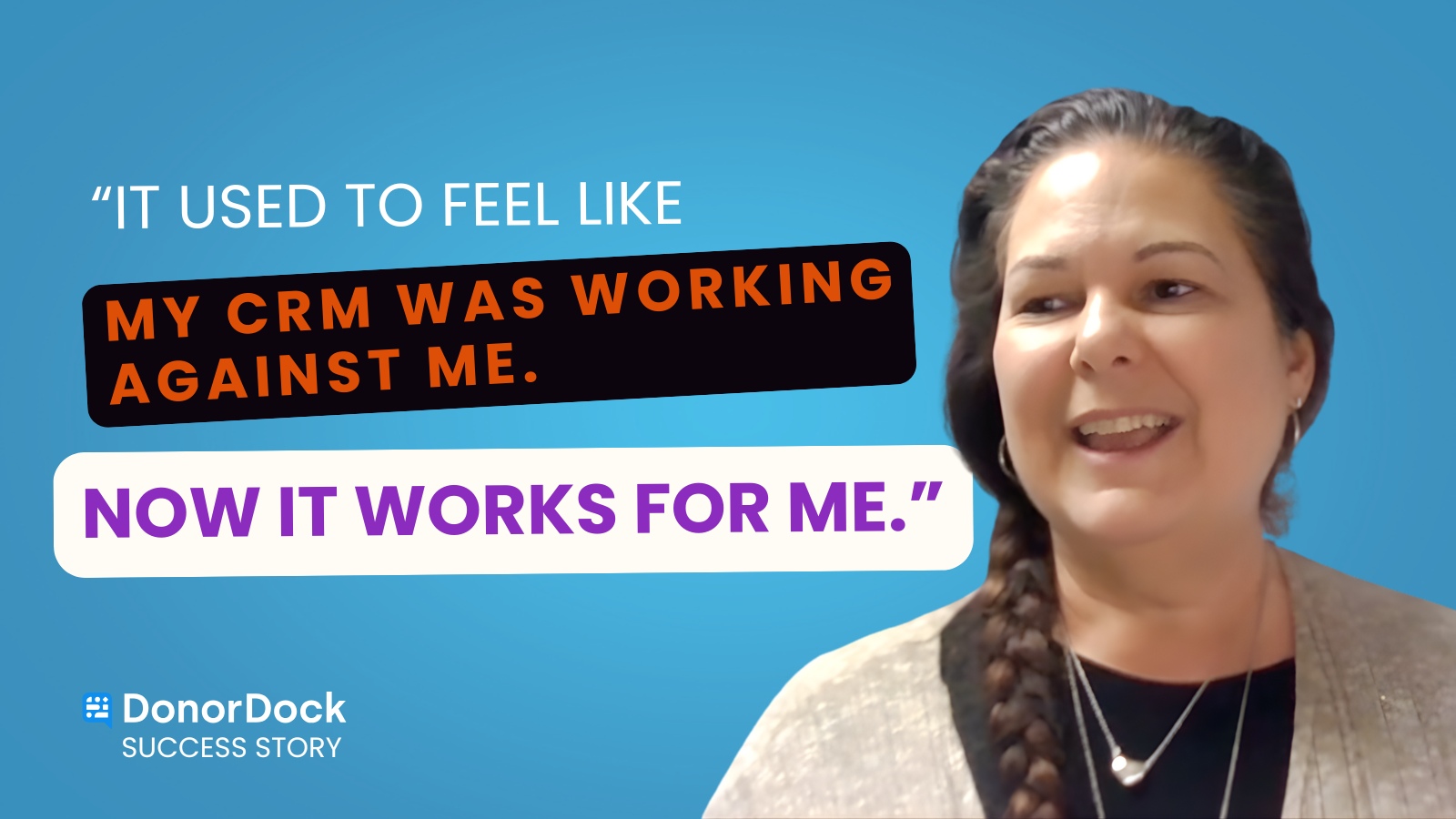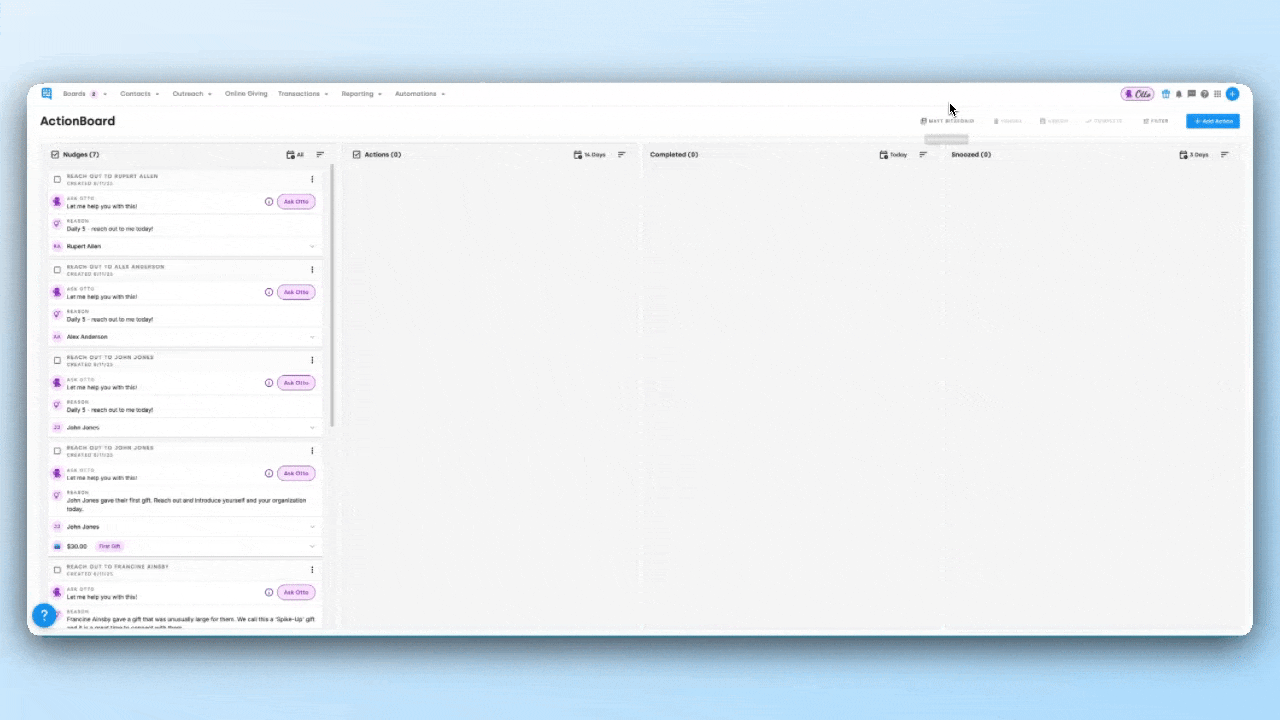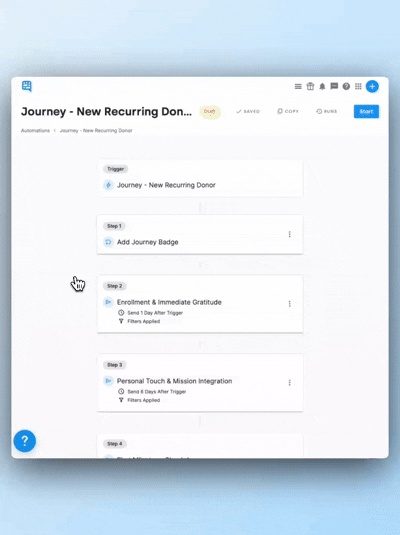
Most nonprofit professionals know the feeling: you’re managing fundraising, marketing, donor engagement, and community outreach, often as a team of one.
That was the case for Carolyn Gorst, Director of Development at a small housing nonprofit dedicated to helping families find stability and independence through affordable housing.
“We run lean, as most nonprofit organizations do. I wear many hats, fundraising, donor retention, community engagement, brand awareness… all of it is part of my daily life.”
Like many nonprofits, Compass Affordable Housing’s passion for impact was matched only by the complexity of its tools. “We were using a Frankenstein of systems,” she explained. “Bloomerang for CRM, separate platforms for campaigns, and spreadsheets to glue it all together.”
The result was predictable: hours lost to manual uploads, inconsistent data, and no clear picture of donor behavior.
Compass isn’t alone. 62% of nonprofit professionals cite manual data entry and disconnected tools as their biggest operational challenge.
For small teams, that fragmentation has a real cost. It means less time for donors, less clarity in campaigns, and more frustration when trying to prove impact.
“We really were struggling to have one space to manage our donors. We needed a better way to understand who was giving, why they were giving, and how to better steward them.”
Her goal was clear: by her two-year anniversary, she wanted a unified CRM, something that could bring data, communication, and donor journeys under one roof.
Carolyn’s search led her to DonorDock, but not in the typical way. She first discovered it through DonorDock's free AI writing tool designed to help nonprofits craft better donor messages.
“I thought, wow, this is a great opportunity to use AI as my assistant since I’m a program of one.”
From there, she attended a DonorDock webinar and quickly realized it could do far more than help her write letters. “DonorDock had the bells and whistles we were looking for – custom donation pages, multiple campaigns, built-in reminders, and the use of AI as a true assistant. That was the big seller for me.”
What Carolyn found wasn’t just software, it was a platform designed for small teams who need to act big. DonorDock’s Otto AI assistant helps automate reminders, suggest outreach, and simplify communication workflows, turning what used to take hours into quick, automated actions.
Every fundraiser knows the dread of migrating systems. But for Carolyn, the transition was surprisingly smooth.
“The migration was easier than I thought. They really step you through it. Hindsight being 20/20, I wish I’d gone with the white-glove onboarding, it would’ve been 100% worth it.”
Even when legacy data proved messy, DonorDock’s support team made the cleanup manageable.
“The team was amazing at helping me figure out what wasn’t working. I never felt like I was on my own.”
Many nonprofit teams say human onboarding support is the single most important factor for long-term CRM adoption. DonorDock’s approach aligned perfectly with that insight.
Before DonorDock, Carolyn spent much of her week juggling follow-ups. Every donor interaction meant opening spreadsheets, scrolling through contact lists, and manually setting reminders to send thank-yous or make phone calls.
For someone leading development, marketing, and community engagement all at once, those small administrative tasks consumed hours that could’ve been used to deepen relationships. “I used to block off entire days just to update donor tasks,” Carolyn said. “It felt like I was constantly catching up instead of getting ahead.”
After switching to DonorDock, that grind disappeared. Otto, the built-in AI assistant, automatically suggests who to follow up with and when, based on giving history, campaign activity, and time since last contact.

“My daily reminders from Otto save me 8–10 hours a month. I don’t have to build my own calendar system anymore, it’s all right there when I log in.”
Those hours add up fast. Instead of data entry, Carolyn now spends that reclaimed time writing personal notes, connecting with donors, and crafting stories that show the tangible impact of their support. The shift from managing to meaningfully engaging is where the real transformation began.
One of the biggest challenges Compass faced before DonorDock was fragmentation. Each fundraising effort – Giving Tuesday, Arizona Gives Day, the end-of-year appeal – had its own platform, its own data, and its own learning curve. There was no central place to see what was working or how donors were interacting across campaigns.
Now, all of it lives under one roof. Carolyn can spin up donation pages, run multiple campaigns at once, and track results in real time. Emails, print appeals, and phone outreach all connect back to one unified donor record.

“We’re re-engaging lapsed donors, nurturing current ones, and reaching new donors – all in DonorDock. It’s exciting to see all the pieces work together.”
The result is cohesion: every touchpoint reinforces the next. Instead of sending one-off appeals, Compass is now creating donor journeys, thoughtful sequences that guide supporters from awareness to advocacy. That strategic view has helped Carolyn plan campaigns that build relationships, not just revenue.
With her old setup, data was scattered and reactive. Reports took hours to compile and often raised more questions than answers. DonorDock changed that overnight.
Dashboards now show giving trends, engagement rates, and donor history at a glance. Carolyn can segment by giving level, campaign, or recency to tailor her messaging. The ability to quickly visualize data transformed her approach to stewardship.
“It’s pushing us to evaluate how we’re stewarding our donors,” she said. “We’re putting it back together in a much more effective way.”
Instead of treating donors as a list, she now sees them as stories with insights guiding when to thank, when to invite, and when to simply listen.
At the center of this transformation is Otto, DonorDock’s AI-powered assistant. But unlike the intimidating AI tools some fear will depersonalize fundraising, Otto feels like a teammate, one that handles the repetitive work so Carolyn can focus on the relational work.
It helps her draft donor updates, refine campaign language, and even generate follow-up prompts after events.
“I don’t feel like I’m a team of one anymore. My CRM is actually working for me, not against me.”
Otto doesn’t replace her outreach, it amplifies it.
“It acts as my editor, my idea partner,” Carolyn added. “It helps make the data sound interesting and the impact stories come to life.”
By freeing her from the burden of busywork, Otto gives Carolyn something far more valuable than time: mental clarity. It allows her to show up fully as a storyteller and relationship builder, not just a system manager.
What began as a software migration became a shift in perspective. Carolyn realized that the real cost of juggling disconnected tools wasn’t the software fees – it was the time, energy, and focus those tools stole from her mission.
“Don’t just look for the lowest-cost CRM,” she said. “Look at the opportunity cost to you. What’s the time you’re losing managing multiple tools? DonorDock gives me that time back.”
That clarity also led her to simplify elsewhere. She phased out tools that had outlived their usefulness, replaced manual workflows with automation, and leaned into a more intentional rhythm of stewardship.
For Carolyn, DonorDock didn’t just replace technology, it replaced friction. What was once a tangled network of disconnected systems is now a single, organized space where everything connects: data, communication, and donor relationships.
The impact is bigger than convenience. It’s about confidence. Carolyn knows her data is clean, her donors are cared for, and her time is being spent where it matters most.
“We’re really happy with our decision and look forward to being a longtime partner with DonorDock.”
If your team is small, your mission big, and your tools disjointed, you don’t need another platform, you need a simpler one.
DonorDock helps nonprofits like yours consolidate systems, automate follow-ups, and communicate with donors in ways that feel personal, not procedural.
👉 Schedule a Demo to see how DonorDock can help your nonprofit save time, raise more, and build lasting donor relationships.

